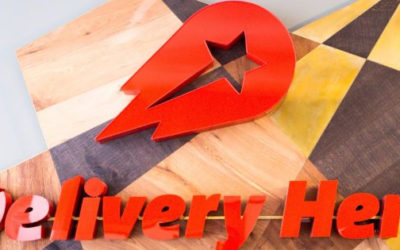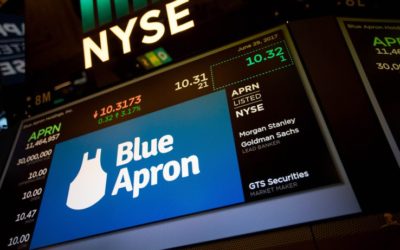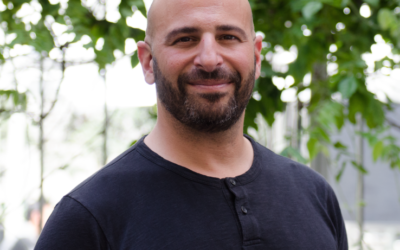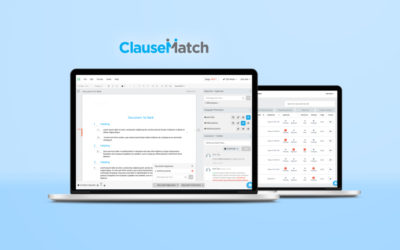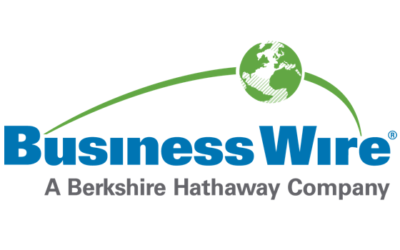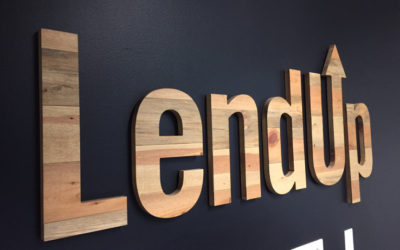Snapchat bought the AR location intellectual property of startup Drop
Augmented reality location startup Drop tells TechCrunch that Snap Inc acquired its intellectual property in 2015 including its “Location-based messaging” patent.
By utilizing Drop’s intellectual property, Snapchat could launch a similar feature allowing users to discover location-based messages with the Snap Map or Snapchat’s AR lenses.
At the end of 2015, Drop eventually launched a real-time location sharing app called Firefly.
The app was quite similar to Zenly, the social map startup that TechCrunch reported last week had been bought by Snapchat for $250 million to $350 million, and will continue to run autonomously while also having inspired Snapchat’s new Snap Map.
In anticipation of Snap Map’s launch, it appears that Snapchat sought to beef up its location patent portfolio.
It happened very fast.” After some prying, he revealed that total price paid was “under $1 million”, though another source tells TechCrunch it was closer to $100,000.
“I think the reason Snapchat went after our patent is because we’re one of the first to have a patent in the space.
Our patent was very expansive and covered a lot of use cases” DeWitt says.
Meanwhile, Instagram recently launched Location Stories that shows other people’s ephemeral photos and videos from a certain place.
The physical world will take a lot of work to flesh out with augmented reality content.
Blue Apron tumbles again in its second day as its IPO settles for a down round
Blue Apron tumbles again in its second day as its IPO settles for a down round.
Early in the planning process, Blue Apron was shooting for a price range of between $15 and $17, which would have helped it raise even more money and value the company at around $3 billion.
Instead, it had to settle for a valuation below $2 billion and a lot of questions about the company’s future on Wall Street.
But the stock went nowhere on its first day, and now it’s dipped below that initial pricing, effectively meaning the IPO was the equivalent of a down round — and the company has a whole different set of standard to which it’ll be held accountable.
Still, Blue Apron is certainly spending a ton of money acquiring customers — and it’s not clear if those customers are sticking around.
The company burned through more than $52 million and it added around 160,000 customers.
The company’s customer base is growing, but that’s a huge investment in acquiring new customers and hoping they order food on a regular basis.
The company has to create a super-sticky product in order to get a return on that investment.
In the long run, it may show that it’s built up a core audience for its product and achieves the lifetime value it wants from that investment.
Snap went public with a bang and likely made a lot of people a lot of money, but its stock has cratered since its first earnings report.
Delivery Hero’s valuation surpasses $5B following successful IPO
Delivery Hero’s valuation surpasses $5B following successful IPO.
The share price quickly rose to reach as high as €26.90 — or up 5.5 percent — on the first day of trading, according to Bloomberg.
That peak price gave six-year-old Delivery Hero, which is present in more than 40 countries, a market capitalization of around €4.5 billion, or approximately $5.1 billion.
Delivery Hero earned around €465 million ($530 million) from the IPO, which it plans to use to repay loans and invest in growth.
That’s in contrast to US food delivery outfit Blue Apron, which endured a rocky start to life on the NSYE less than 24 hours earlier.
It booked a total loss of €202 million ($230 million) last year, although total revenue for 2016 did rise 71 percent year-on-year to reach €347 million ($390 million) and overall orders rose by 51 percent, too.
That was thanks in no small part to its acquisition of Rocket Internet’s FoodPanda business which gave Delivery Hero a presence in 20 new countries across Eastern Europe, the Middle East and Asia, and strengthened its position in many others.
Today’s IPO is a major boon for Rocket Internet, which owns a 35 percent stake in Delivery Hero thanks to the FoodPanda deal.
German incubator-cum-investor Rocket Internet has been criticized for a portfolio of loss-making business, although it has now managed to exit two of its highest profile ventures.
Featured Image: Delivery Hero (Facebook) (IMAGE HAS BEEN MODIFIED)
Steve Case: ‘Third wave’ of Internet will help Middle America business
I concluded that while advocating for policies that are pro-innovation, pro-entrepreneurship, pro-start-up, it’s something I continue to do, but there also was a role to play I felt in terms of trying to be a catalyst within some of these cities and helping to build more of a network effect and network density in these cities and shine a spotlight on what’s happening with entrepreneurs in these cities to attract more media and attract more investor attention.
Each city is different but there are dynamics kicking in across all of them that are encouraging and ultimately will result in more start-ups in more places and will ultimately level the playing field so everybody everywhere really does feel like they have a shot at the American dream and so we are creating economic growth and jobs everywhere not just in a few places.
As for city specific reasons, each of these cities has an interesting history and some of that history and some of that perspective and some of that culture and some of that DNA is increasingly helpful as we shift to the third wave of the Internet, which is less about the software and the apps and more about integrating technology and the Internet in important aspects of our lives and disrupting big sectors of the economy.
I think these regional efforts such as angel networks and micro venture capital funds will be helpful.
A: I do think it was a wake-up call for some people who hadn’t fully appreciated this dynamic where if we are only investing or predominantly investing in entrepreneurs in a few places and they’re creating disruptive technologies and companies that end up displacing jobs and we’re not offsetting that at least in part by backing entrepreneurs in these other places so we can create jobs in those other places, too, that there’s going to be a growing divide and a growing frustration and an inevitable backlash.
There are some negatives in terms of the election outcome, but I think maybe there are some positives, too, if in fact there’s a wake-up call and it does lead to more investors focusing on entrepreneurs in these Rise of the Rest cities.
The argument I make to investors is that the main reason you should do it is that you can make money because there is less investor focus.
Q: After the election there has been a lot of soul searching in Silicon Valley and the tech industry about automation, AI and other technological advances leading to job losses and feelings of dislocation.
Is it important for the tech industry to help get people the education and training they need to get jobs in this industry?
When we started with AOL 30 years ago, no one believed the Internet would amount to much, let alone be a big industry, but these things come out of nowhere and surprise you.
Blue Apron whiffs on first day of trading
Blue Apron whiffs on first day of trading.
This is not only a disappointment for the company, which hoped to raise more money by selling stock at $15 to $17 to share, but also for the new investors who bought at the $10 IPO price.
And with a market cap of just below $2 billion, this is a disappointment for the investors who gave the company a $2 billion valuation at the last private round.
Venture investors consider breaking even to be a failure.
They want big wins that pay for the rest of the startups with poor outcomes.
As IPO research firm Renaissance Capital noted in a tweet, “part of Fidelity’s investment in Blue Apron has a ratchet at a 7.5% discount to the IPO price.” And early investors like Bessemer Venture Partners and First Round Capital did very well.
Yet Blue Apron is hardly alone in the meal delivery space.
While they have not announced plans to offer meal kits, at the very least they are expected to offer grocery delivery.
Revenue is growing fast and they brought in almost $800 million last year.
New York-based Blue Apron has been around for just five years, a faster time to “exit” compared to the vast majority of IPO-bound startups.
Conferences: Are They Worth Your Precious Startup Time?
Conferences: Are They Worth Your Precious Startup Time?.
From travel costs, to exhibitor fees, to booth materials and promotional items, conferences are not the most cost-effective events for a startup.
So, when you get an opportunity to attend a big industry conference, how do you know if it is worth your while?
How do you pick out the events to make the most of your precious startup dollars?
If your sales are concentrated in the B2B market, however, recognize that many of these shows attract a consumer market made up of families and environmental enthusiasts, which won’t be ideal for you.
Look at the numbers.
Yes, 30,000 people may attend a conference, but this is a total figure, meaning that there will be 30,000 attendees across two or three days.
One hidden factor that took me a few less-than-desirable conference experiences to understand is the importance of event set-up and schedule.
Are there breakouts/workshops, main stage keynotes, and, most importantly, a scheduled exhibition time?
Attending conferences and events doesn’t have to be.
Yammer co-founder Adam Pisoni just raised $7.5 million in Series A funding for his new company, Abl
Yammer co-founder Adam Pisoni just raised $7.5 million in Series A funding for his new company, Abl.
Abl Schools, a nearly two-year-old, San Francisco-based company that makes time and resource management software for middle schools and high schools, has raised $7.5 million in Series A funding.
Rethink Education led the round, with participation from Sinovation Ventures and earlier backers Owl Ventures, Reach Capital and First Round Capital.
The company, which had raised $4.5 million last year, has now garnered $12 million in funding altogether.
(Microsoft bought the company for $1.2 billion in 2012.)
Pisoni had stayed on at Microsoft as a corporate VP for a couple of years, but even then, he’d begun thinking of how to improve on public school education and whether, given his skill sets, he might help principals and superintendents get a better handle on how best to utilize the teachers, coaches and other members of their school systems.
Today, the young company has 12 employees, including a handful of engineers, two product designers and a former edtech CEO.
Abl isn’t talking about how many schools have signed on to use its software, which costs $3 to $7 per student per year, depending on which parts of its product suite are used.
But it says that this spring, a dozen schools worked with Abl to help it design and test the product; it says, too, that it has hosted workshops with tens of other schools over the past year to gather insights and product requirements that now inform its product strategy.
Next year, it plans to begin supporting elementary schools, as well.
ClauseMatch raises $1.6 million to provide real-time collaboration to finance and legal teams
ClauseMatch raises $1.6 million to provide real-time collaboration to finance and legal teams.
As a former employee of Morgan Stanley, and before that Gazprom, he was on teams that would negotiate contracts and agreements around financial products and the trading of physical commodities.
While technology has evolved in many parts of the enterprise, Likhoded says that financial, legal, risk-related and other compliance-heavy organizations would still overwhelmingly rely on Microsoft Word for creating and editing documents, and email for distributing those documents to everyone who would need to make changes or give approval.
“In large institutions, and the way people work in legal departments… whenever there is a document involved… several stakeholders comment, add changes, or provide approvals on that document.
You would send that to 10 or 20 parties, get 20 documents back, then get 10 different copies of that document you would then have to put that back together,” Likhoded told me.
With all that in mind, Likhoded sought to build ClauseMatch, which provides a real-time collaboration tool for financial and legal teams to create and edit documents, track changes and mark as approved before being signed.
It simplifies the process of indexing all updates and provides a comprehensive audit trail for all documents, giving teams greater visibility into how documents evolve over time, and more control over sensitive materials because it knows everyone who might have made changes.
After a soft launch in early 2016, ClauseMatch was adopted by Barclays to streamline the company’s policy management.
And it has several other clients that are in proof-of-concept trials that are looking to move to full deployments of the software.
With the funding in place, ClauseMatch will look to expand its already growing team.
This NYC Startup Raised $15M to Make Local Pizzerias Into…
With Americans consuming 350 slices of pizza every second, it is no question that people want to support their favorite shops, and Slice is here to make that happen!
Slice is the leading online and mobile pizza ordering platform that connects every pizza lover with their favorite authentic, local pizzeria.
Every order is supported by Slice’s 24/7 customer service team to ensure all orders are successfully processed.
We want customers to continue ordering from their local pizzerias.
Slice is the first end-to-end company that’s specifically focused on one food vertical — pizza.
What’s your business model?
We operate mainly as a Business to Consumer, connecting local shops throughout the nation with their customers.
However, Slice is the only full-service marketing and tech platform dedicated specifically to pizzerias — making it a true partnership with our restaurants.
The number one challenge was conveying to the community exactly how this new model works, what we do, and why it’s helpful.
We currently have over 6,000 pizzerias on our platform and are partnering with major companies like Facebook and Google to make the ordering process faster and easier for consumers.
Blue Apron shares grind 9% higher in shaky stock market debut
Blue Apron shares grind 9% higher in shaky stock market debut.
Blue Apron shares hovered near their IPO price in their first moments of trading on Thursday, rising about 9 percent.
The company priced its IPO at $10 a share, the low end of the expected range of between $10 and $11 per share.
At $10 a share, the IPO should value the company around $1.89 billion.
The company’s Series D round was priced around $13.33 a share in the private market, according to regulatory filings.
The number of U.S. IPOs priced this year has risen nearly 79 percent from a year ago, according to Renaissance Capital, while the total U.S. IPO proceeds have risen over 220 percent year over year.
Blue Apron is one of several start-ups attacking the food delivery business, but the first to IPO.
The acquisition builds on Amazon’s burgeoning grocery store business, and delivery business Amazon Fresh.
But Salzberg said that unlike a grocery store, which distributes food, he sees Blue Apron’s meal kits as proprietary products, sourced from Blue Apron farms and wineries.
As more companies, including Amazon, promote online food shopping, Blue Apron could benefit, Salzberg said.
Accelerator or Incubator? Here’s What to Look for in a Startup Program
Accelerator or Incubator?
Here’s What to Look for in a Startup Program.
Early stage biotech companies and scientists interested in commercialisation need great accelerator programs, not more incubators.
The incubator and accelerator models are conflated all the time in biotech, much to the fury of anybody who truly understands the terms.
If the incubator is good, it will provide some core lab facilities, although many don’t.
Perhaps what is most surprising is that most don’t really cater for very early pre-funded start ups, and they certainly haven’t embraced lean start up culture.
So perhaps in response to critics like myself or more likely to competing incubators spaces that have bloomed over the last decade, some incubators have started offering their own accelerator courses and perhaps mentorship to companies.
The entrepreneur can not think like this.
The entrepreneurial community needs to be led by entrepreneurs, meaning people who have repeatedly dug there own trenches.
Good accelerators are staffed by experienced scientists who understand what it is their biotech startups do technically.
25 Cancer-Fighting Startups In Chicago | Fermilab’s 2 New Research Hubs
25 Cancer-Fighting Startups In Chicago | Fermilab’s 2 New Research Hubs.
Karis:Since cancer scientists and researchers can’t provide a quick return on investment like startups in other fields, innovative cancer initiatives often struggle to secure funding through traditional sources.
Jim: That’s where the Cancer Research Foundation steps in.
The organization–which views itself as a sort of venture capital arm for cancer innovation–provides $75,000 grants–dispersed over two years–to around four to five researchers a year, though they aim to boost those numbers in the future.
It gives researchers with innovative ideas–such as a Washington University in St. Louis researcher using zebrafish to better understand how melanoma cells grow and change in real time–the funding to help grow their early-stage cancer research into potential game-changing breakthroughs in cancer prevention and treatment.
[More here] Karis:While there are the funding and lengthy research challenges to getting innovative cancer treatments off the ground, as referenced above, that hasn’t stopped founders in Chicago from choosing to disrupt cancer in any way they can.
We put together a list of 25 Chicago startups doing just that.
These ventures fight the chronic disease through innovations in pharmaceuticals (Exicure), diagnostic tools (Ohmx), big data (Tempus), medical devices (LifeMotion Technologies), survivorship plans (SurvivorPlan) and even subscription gift boxes (Thriveosity).
If these startups succeed, the return on investment is far more than money.
It’s improving the quality of life, and perhaps even saving the lives, of the millions of people suffering from cancer today.
A Canadian venture capital firm is paying entrepreneurs to relocate and become citizens
Upon arrival, they’ll receive seed funding, guidance on beginning their new Canadian life, and the opportunity to get on the fast-track for citizenship.
Sharma says EVP is prepared to welcome 30 companies over the next three years.
Sharma and his team hatched the plans for the fund roughly a year ago.
And given the current political climate in the US, with the H1-B work visas often used by tech workers under threat, the fund could lure Silicon Valley firms up north.
Chosen companies will receive between $50,000 and $100,000 in funding, mentorship for growing the business, and guidance for finding additional funding.
In addition, the country ramped up its work visa program earlier this month to shorten the time between residency and citizenship. “They can come over almost instantaneously,” Sunil Sharma, EVP cofounder, told Business Insider. “And then within a couple years they’ll be citizens of Canada.” “It’s become one of these world-class cities while we weren’t looking, and that is really conducive for tech founders that want to have a good place to work, super low crime rate, lots of job opportunities, and all that.
We’ve got that in Toronto.”
Hennessy Capital Acquisition Corp. III Completes $225 Million Initial Public Offering
Hennessy Capital Acquisition Corp. III Completes $225 Million Initial Public Offering.
NEW YORK–(BUSINESS WIRE)–Hennessy Capital Acquisition Corp. III (NYSE MKT: HCAC.U) (the “Company”) announced today the closing of its initial public offering of 22,500,000 units at an initial public offering price of $10.00 per unit, with the offering raising gross proceeds of $225 million.
The Company has granted the underwriters a 45-day option to purchase up to an additional 3,375,000 units to cover over-allotments, if any, in the offering.
Credit Suisse Securities (USA) LLC and Stifel, Nicolaus & Company, Incorporated acted as joint book-runners for the offering.
Once the securities comprising the units begin separate trading, the common stock and warrants are expected to be listed on the NYSE MKT under the symbols “HCAC” and “HCAC WS”, respectively.
Hennessy Capital Acquisition Corp. III is a newly organized blank check company founded by Daniel J. Hennessy and formed for the purpose of effecting a merger, capital stock exchange, asset acquisition, stock purchase, reorganization or similar business combination with one or more businesses.
A registration statement relating to these securities was declared effective by the Securities and Exchange Commission on June 22, 2017.
The offering was being made only by means of a prospectus, copies of which may be obtained from: Credit Suisse Securities (USA) LLC, Attention: Prospectus Department, One Madison Avenue, New York, NY 10010, or by telephone at (800) 221-1037, or by email at newyork.prospectus@credit-suisse.com, and Stifel, Nicolaus & Company, Incorporated, Attention: Syndicate, One Montgomery Street, Suite 3700, San Francisco, CA 94104, or by telephone at (415) 364-2720, or by email at syndprospectus@stifel.com.
Note Concerning Forward-Looking Statements This news release may include “forward-looking statements.” All statements, other than statements of historical facts, included in this news release that address activities, events or developments that the Company expects or anticipates will or may occur in the future are forward-looking statements.
Consequently, all of the forward-looking statements made in this news release are qualified by these cautionary statements and there can be no assurances that the actual results or developments anticipated by the Company will be realized, or even if realized, that they will have the expected consequences to or effects on the Company, its business or operations.
Diabetes management platform Glooko raises $35 million
Diabetes management platform Glooko raises $35 million.
Glooko, a startup selling data management healthcare service on top of a device-agnostic platform to make it easier for doctors to remotely monitor patients, has pulled in $35 million Series C funding.
The startup was shy about how many were using the platform last time TechCrunch wrote about the company.
But it was more forthcoming today, claiming to have helped more than 1 million patients served by 6,000+ providers so far.
But it will need to continue to rapidly expand to compete with some of the larger players in the space like Dexcom and Medtronic.
Glooko plans to use the funding to help it get there by expanding its sales, marketing and development teams as well as increasing commercialization efforts in France, Germany, the U.K., Asia and the Middle East.
Toronto-based Georgian Partners led the round, along with other new investors Insulet Corporation and Mayo Clinic.
They join existing investors Canaan Partners, Social Capital, Medtronic and Samsung Next.
“This additional funding will help us to further our mission: to improve the lives of people with diabetes,” Glooko CEO Rick Altinger said.
“With this capital, we will accelerate our investments in clinical solutions that aim to increase medication adherence, provide personalized insights and prompts that drive behavior change for people with diabetes, and deliver clinical decision support to thousands of clinicians and coaches so they can better support people with diabetes in between office visits.”
Karnataka government grants Rs 3.18cr to 12 startups in new funding round
Karnataka government grants Rs 3.18cr to 12 startups in new funding round.
From robotics, biotech, communications to wireless safety devices and agri-tech, these startups shine a torch on why Bengaluru is on top of the world in the startup ecosystem.
Ridecam is a dashboard camera that is connected to the cloud and warns drivers is they exceed the speed limit, for example.
In case there is an accident, it also send a message to the family and police,” says Kalathur describing the various uses a simple device like this can have in a country where two-wheelers have become a status symbol.
Surebell is their video solution which allows those on the inside to see who is outside the door.
This is an interactive and smart security space where Chinese products have flooded the market.
But the warning is that these Made in China products can share the video with anyone whereas we write the code ourselves and even customise.
Avinash Rao of ispAgro Robotics received Rs 20 lakh for his micro aerial vehicle.
“It is not an autonomous drone and that means it does not require a DGCA licence to fly,” adds Rao.
Among other companies that got funded are EasyKrishi (Rs 15 lakh) whose technology helps farmers save money while buying agriculture inputs and selling produce; Selfdot Technologies (Rs 30 lakh) for 3D modelled engineering drawings; Geeksynergy Technologies (Rs 30 lakh) for their airpaper project to provide a new channel for digital communication; Astrome (Rs 30 lakh) for developing wireless technology to resolve congestion in 4g and 5G networks that extend range of fiber optic cable; Easysoft (Rs 20 lakh) for their Smart Grid big data and analytics platform that alerts the emergency service providers the location in case of accidents; Sirena Technologies (Rs 48 lakh) for its completely home-grown robotic-platform.
LendUp gets strategic investment from PayPal and adds to its executive team
LendUp gets strategic investment from PayPal and adds to its executive team.
LendUp has built business providing personal loans to customers that traditional financial institutions wouldn’t touch.
It’s a group the LendUp team likes to call “the emerging middle class,” and the company hopes to give them tools to help them get out of debt, save money, and overall just become more financially successful.
Its message and methods resonated with PayPal, which according to LendUp CEO Sasha Orloff, shares a lot of the same vision and also serves many of the same customers.
Orloff says the funding came as a result of his relationship with PayPal CEO Dan Shulman, who he got to know while Shulman was at American Express.
“We liken this a lot to what amex did for wealthy business traveler, [LendUp] could do for different customer,” Orloff said, adding that Shulman has a passion for financial inclusion and LendUp’s approach.
On the investment front, PayPal has become more active in the last year or so.
Dolan also served as treasurer of Charles Schwab Corp and was CFO of Schwab Bank, which she helped launch in 2003.
So that’s a lot of people from traditional banking institutions.
Add in a mission-driven streak, and he believes LendUp is recruiting people who want to see better financial services in the world.
VCs Ask Men About the Future and Women About Failure, New Study Finds
VCs Ask Men About the Future and Women About Failure, New Study Finds.
And in 2016, women founders received a little more than 2 percent of venture capital funding.
What’s behind these dismal numbers?
A new study conducted by researchers from Columbia Business School and University of Pennsylvania’s Wharton School identified that the types of questions that VCs pose to female and male founders differ greatly and impact how much money the founders receive.
The researchers observed the interactions between 140 venture capitalists — 60 percent men and 40 percent women — and 189 entrepreneurs (12 percent of whom were women) during pitch sessions at TechCrunch Disrupt New York.
Sixty-seven percent of the questions posed to male founders were, as described by the researchers in Harvard Business Review, “promotion-oriented,” but 66 percent of the questions directed to women founders were “prevention-oriented.” Where men got questions such as “How do you plan to monetize this?” when it came to sales, women got “How long will it take you to break even?” When looking to the future, men were asked, “What major milestones are you targeting for this year?” while women were asked, “How predictable are you future cash flows?” Once the entrepreneurs got stuck in that loop, it was hard to get out.
Eighty-five percent of the founders responded to the questions in a way that matched the query they received.
The founders who got predominantly prevention questions raised an an average of $2.3 million, while the entrepreneurs that got those promotion questions raised an average of $16.8 million.
“By responding in kind to promotion questions, male entrepreneurs reinforce their association with the favorable domain of gains; female entrepreneurs who respond in kind to prevention questions unwittingly penalize their startups by remaining in the realm of losses,” the researchers explained in Harvard Business Review.
Thirty percent of the VCs were women, as were 47 percent of the ordinary people.
